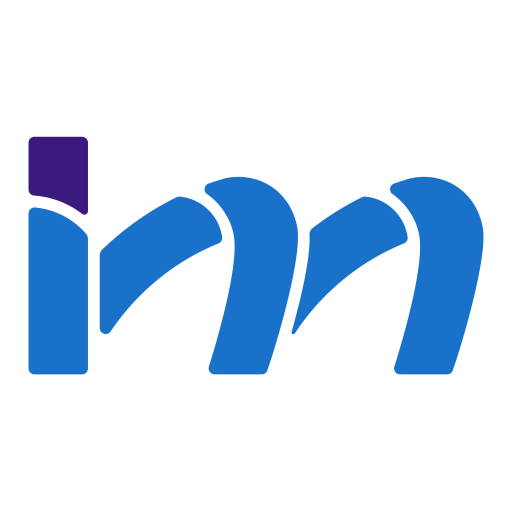Contact us. We are happy to talk about your needs and prepare an offer.

Python outsourcing
At ImpiCode we provide outsourced programming in Python, at every level of advancement, with particular emphasis on experienced Python senior developers. It is important to underscore that we work only with our own proven dev team.
In our clients’ projects, we usually use two frameworks, Django (also including Django CMS and Django Rest Framework) and Flask. We have experience also with such tools as Pandas, SciPy, Numpy, and PySpark, as well as with CircuitPython and MicroPython.


Our services
We provide wide, extensive, and in-depth Python programming competencies. Our developers have rich experience in areas such as:
- business solutions,
- fintech systems and tools,
- biomedicine: bioinformatics, telemedicine,
- data analysis: data science, big data, machine learning, statistical analysis,
- artificial intelligence: machine learning, natural language processing (NLP),
- R&D projects, prototyping,
- cloud solutions,
- system integration.
Our Clients
The scope of work
When it comes to programming in Python, we provide comprehensive support, starting from the teeming up, through project management, to implementation and maintenance.
On the technical side, we design and analyze in Python, program, and test (both front-end and back-end), as well as integrate and implement.
At ImpiCode we work with our team or join an existing Python team, both as regular programmers and team leaders. We also provide specialist support and mentoring.
What is Python?
Python is a dynamic programming language distinguished by a multitude of usability features and its ease of learning. Python has very extensive standard libraries and numerous frameworks. Python’s author wanted mainly to create a general-purpose programming language with a readable and transparent source code. Python’s syntax is concise and readable, which makes it much easier to learn how to program with it.
Python is a multi-platform language because its interpreters are available for many operating systems. It supports various programming paradigms, such as object-oriented, imperative, and functional. It has automatic memory management and a fully dynamic type system. Python is mostly used in such fields as data science and machine learning, although it is still used as a scripting language.
Python is still being developed as Open Source projects of the non-profit Python Software Foundation. CPython (written in C) is a standard implementation of this language, but there are other implementations such as PyPy and Jython. It’s worth highlighting that Python is one of the most popular programming languages used and learned by developers. That’s why no one is surprised by the fact that the group of its users grows consistently.
Who uses Python?
Python is used in projects not only of the biggest global companies like Google, Yahoo, and IBM but also by the biggest space agency. NASA systematically builds applications in this language for a couple of years. One of the projects was the creation of an application to manage shuttle launch controls. YouTube, currently a very popular application, was also written almost entirely in Python. The authors of this website said that their decision was primarily driven by the flexibility of Python and the ability to quickly implement new functionalities. They appreciated that the code was very readable and easy to extend or update. Google uses Python in many applications, such as Google App Engine, and offers its libraries for many services and APIs. Also, other technology giants, i.e. Microsoft and Apple, offer full support for Python in their operating systems and programming platforms.
Python’s popularity
Python has been growing in popularity for several years now. There are several reasons for this. One is the continuous development of industries such as data science and machine learning, which is directly related to the labor market and the increasing number of offers for programmers with knowledge of this language. Another reason may be the easy and fast learning.
Whatever the reason, there are statistics showing Python’s growing popularity. According to the TIOBE index that shows the popularity of programming languages, Python has consistently maintained third position (right behind C and Java) for some time. Interesting information can be drawn from the data showing the annual percentage change in the popularity of a language. Python has had the highest positive change, which means that increasingly more users are embracing it each year. The situation of Java, which is currently ahead of Python is a little bit different. The number of users of this language is decreasing year by year. This means that Python is stiff competition for Java.

GitHub is one of the most popular clouds hosting Git repositories. In GitHub, developers can share their code and work on it together in real-time. In GitHub, Python ranks second in terms of project languages. Updated recently, the number of projects created in Python was 993,581 (currently there are probably already more).
According to Stack Overflow, Python is third the most tagged programming language. Currently, there are over 1 572 000 queries for this particular language.
Website Meetup says that the number of Python users and groups ranks second. There are approximately 2,461 groups of 2,471,165 Python users worldwide. In Poland, we have 57 groups and 41,223 users.
The history of Python
Python isn’t one of the newest programming languages like Kotlin or Dart, but it’s not very old either. Python was created in 1991 at the Center for Mathematics and Computer Science in Amsterdam (CWI). The main creators’ idea was to build a successor to the ABC language.
Undoubtedly, Guido van Rossum had the biggest impact on the creation of Python, and he is considered to be the most important creator of this language. Guido can boast about his informal title of Benevolent Dictator for Life. The nickname is given to the largest leaders of Open Source projects, who have a significant contribution to the development of the solution and are widely respected. Guido not only built Python but is constantly working on developing it, and that’s why Guido is one of the greatest authorities for Python users. In addition, a really interesting fact is that this Dutchman is very happy to answer all questions about Python sent by email.
The name Python does not come from the animal (although the logo might imply it), but from the comedy series “Monty Python’s Flying Circus”, of which the main creator is a huge fan. His colleagues agreed with him that the name Python is interesting, unique and catchy. In addition, the process of designing the appropriate logo turned out to be relatively easy, thanks to the characteristic name.
Python was initially released in its 0.9.0 version but was very soon replaced by its newest versions. Version 1.2 was the last one released by CWi, because, since 1995, the creators of Python continued their work at the Corporation for National Research Initiatives (CNRI) in the United States. Guido, along with his coworkers, hasn’t worked at CNRI for a long time. In 2000, he transferred to BeOpen, where the PyhonLabs team was created.
PythonLabs moved to Digital Creations (now Zope Corporation) that same year. In 2001, the non-profit Python Software Foundation (PSF) was created to officially own all Python intellectual property and release version 2.1. Since then, all versions have been released by this organization.
Specification
Python is known as one of the best languages to start learning how to program. This fact doesn’t surprise anyone, because of the specificity of the language. Python has a simple and clear syntax providing a better and faster understanding of key concepts and functions. English speakers, even at a basic level, should not have many problems understanding Python code. Only a few symbols used to shorten the notation need to be explained. Python’s syntax is marked by minimalism and a lack of unnecessary additions. Python’s code and syntax perfectly fulfill its primary goal of simplicity.
Code formatting and white space are very important. These are distinctive features of Python that differentiate it from other languages. Python uses indentation where other languages use punctuation.
It’s worth mentioning that Python is a dynamically typed language, which means we do not have to specify the data type for the variables. The huge advantage is automatic memory management possible only thanks to the usage of the garbage collectors. In such a way, the developer doesn’t waste time with the allocation and deallocation of objects.
Python is available for various operating systems. It can be run on almost any Windows, macOS, and Linux platforms. What is more, it’s completely free to use, modify, and distribute. Documentation is also available for everyone. It needs to be highlighted that Python distinguishes by its open-source code, which is constantly developed and modified by its community. That’s why every Python user can make a real contribution to its development.

The advantages
Python can boast about a very long list of advantages. Below are listed and described the most important advantages of this popular language.
Code readability
Readable Python code not only presents well visually but significantly facilitates the process of maintenance and development. In Python, the association of code to a given block is marked with indentation, not with braces or some keywords. As a result, we get elegant and easy to understand code. In Python, it’s not necessary to remember to put semicolons at the end of expressions. As a result, code in Python contains far fewer characters than, for example, code written in C or Java. Code readability contributes not only to an easier understanding of the written code but also enables faster error detection.
Simplicity of syntax
The simplicity of the syntax means the usage of commands written in English, thanks to which, a developer can more easily and quickly understand the commands and expressions, making the programming language much easier to learn. In other languages, English is also used very often, but only in Python, the syntax of the language is so close to the English language. It is worth noting that the simplicity of the syntax contributes to the expressiveness of the language. As a result, several lines of code could possibly be replaced with just one line.
Dynamically typed language
Python is a dynamically typed language. It means that when declaring a variable, there is no obligation to specify its type, i.e. you do not have to answer the question of which format of data will be stored in it. It should be noted that the dynamically typed language also supports easy data type changes later.
Multiple usages
Due to the fact that Python is a general-purpose language, it can be used to create many things, starting from desktop applications, games, through creating scripts, interpreters, compilers, and ending with specialized applications for scientific computing, data visualization, and their scraping from the web.
Community
The Python community is highly valued for two reasons. First, the users are very active and also willing to help with other members’ problems. Second, the number of Python users is really impressive. No wonder that developers have free access to a large number of materials, guides, libraries, and frameworks. Thanks to this, developers, instead of creating their own library, can use a library written by another person. In this way, programmers save their time and focus on the process of implementing specifically targeted elements. It is worth emphasizing that Python users are very eager to share their knowledge with others. In the event of an error, it is often more effective and definitely faster to ask a question on a forum than to browse the technical documentation.
The right code regardless of the platform
Python supports almost every platform used today, ranging from the most famous like Windows and Linux to such platforms as Solaris, VMS, or HP-UX. Python does just as well on any platform, and the process of moving a project from Linux to Windows is sometimes limited to just transferring copied scripts between computers.
Easy integration with other languages
The big advantage of Python is its relatively easy integration with other languages on various platforms. It is possible to write some C or C ++ extensions in Python that run much faster than Python itself. It is common practice to write most of the applications in Python and a few small parts of it in C language. In C, first of all, are written those functionalities that should operate very quickly.
The disadvantages
Despite many advantages, Python has also a few disadvantages that should be known when deciding about this programming language for a specific project. All relevant disadvantages are listed below.
Not quite satisfactory performance
Python in comparison with such languages like C or Java has worse performance. It’s not that Python is very slow or sluggish. Through various optimizations over the years, Python has become a language that is fast enough, but not the fastest. Bear in mind that performance does not always turn out to be the key factor in the project. Even though Python is slower than C and Java, developers often choose this language because of its support for rapid development. Python code can be written much more quickly than C or Java. In addition, there are now many options for speeding up the performance of Python programs by using various libraries containing optimization processes.
Global Interpreter Lock
GIL (Global Interpreter Lock) is a special lock that allows the interpreter to run on only one thread. Python is not exactly the perfect choice when it comes to multi-threaded applications, as only one thread at a time will have access to the interpreter. The lock was launched to Python at the beginning when most operating systems were single-threaded. Back then, GIL was not an obstacle. On the contrary, it significantly facilitated the work of developers. Although the implementation of GIL was relatively easy, getting rid of it at this stage of language development is unlikely. However, in today’s world, there are solutions to help a developer deal with the lack of multithreading. These solutions include multiprocessing and asynchronicity.
Small mobile development possibilities
Python is not a perfect language to create mobile applications. Despite it being currently possible to use the Kivy library to create cross-platform applications, using Python for mobile development is still a rarity. The main disadvantage of the Kivy library is the need to use only its own components, not those used in a given platform.
Where is Python used?

Python is a language with a wide range of applicability, but currently, it’s used mainly in fields such as data science, big data, and machine learning. Startups very often choose this language to create an MVP or a prototype.
Python is also used in:
- data analysis
- task automation
- component integration
- creating websites
- programming of graphical user interfaces
- database programming.
International Python community
The international Python community boasts over 4.4 million users. Community members are very active in various forums, helping and offering useful advice to novice developers. The community truly contributes to the development of the language by sharing hand-written codes.
One of the most famous and numerous Python communities are members of the Python Software Foundation. PSF is a non-profit organization curating, developing, and promoting Python. There are five classes of users in the PSF. When joining the PSF, we start with the first class of core members. If we are very committed to language problem-solving and language development, we may be transferred to a supporting class or even join contributors. The remaining classes are created by supporters, managers, business partners, and sponsors.
PEPs (Python Enhancement Proposals) are special design documents stimulating Python development and chronicling its evolution. These documents are essential for the language ecosystem. Therefore they are kept very systematically, accurately, and scrupulously. The main purpose of the documentation is to provide the community with key information about modifications, improvements, or enrichment of the language with new functions.
The Python community not only exists in the virtual world but also in the real world. There are a lot of conferences organized for Python users. The most important resources and information about interesting events can be found on the official website, Python.org. A lot of interesting information can be found on the Reddit and IRC channels. A noteworthy initiative is the PyLadies group, which aims to increase the participation of women in the Python community.
Programming web applications in Python
Programming web applications in Python is extremely pleasant and fast thanks to the availability of a large number of well-developed libraries and frameworks. Instead of writing the entire code from scratch, developers use appropriate components included in the frameworks, which significantly reduces their work time. The most popular Python frameworks include Django, Flask, Bottle, Tornado, Pyramid, and TurboGears. One of the best known and used libraries is Kivy, which is used to create highly interactive applications based on multi-touch technology. Kivy supports major operating system platforms such as Windows, Android, macOS, and Linux. Selenium library for web application automation is also often used.

Programming desktop applications in Python
Many developers choose Python to develop desktop applications. Numerous Python frameworks and libraries enable GUI programming, i.e. creating graphical user interfaces. One of the most powerful and used libraries is PyQt including a set of tools that support graphical widgets. Another popular library is Tkinter providing a lot of different widgets, which mainly include labels, buttons, text boxes. PyGUI is a cross-platform framework with the lightest GUI libraries. The great advantage of programming in Python are libraries that support the development of both desktop and mobile applications. As noted earlier, one of these is the Kiva library.
Python in IoT
Every year there is a significant increase in the number of devices using IoT. The Internet of Things is a young field, but it is rapidly evolving and expanding. IoT devices control the network infrastructure remotely. Their main purpose is to increase efficiency, obtain economic benefits, and reduce the degree of human interference. IoT solutions can be used in every area of life. They can facilitate our everyday life, e.g. Smart Home solutions, or the support of safety, the ecology, or healthcare. Many programming languages can be used to create IoT solutions, but one of the most frequently chosen languages is Python. Just a few years ago, Java was more often chosen than Python to create IoT solutions. However, many advantages of Python were soon noticed, which significantly improve the work. When it comes to IoT devices, developers choose Python primarily because of high coding efficiency, ease of integration with other languages, and support for extensive libraries.
If you want to find out more about our scope of work in Python or are considering creating a specific application – write to us via the contact form






